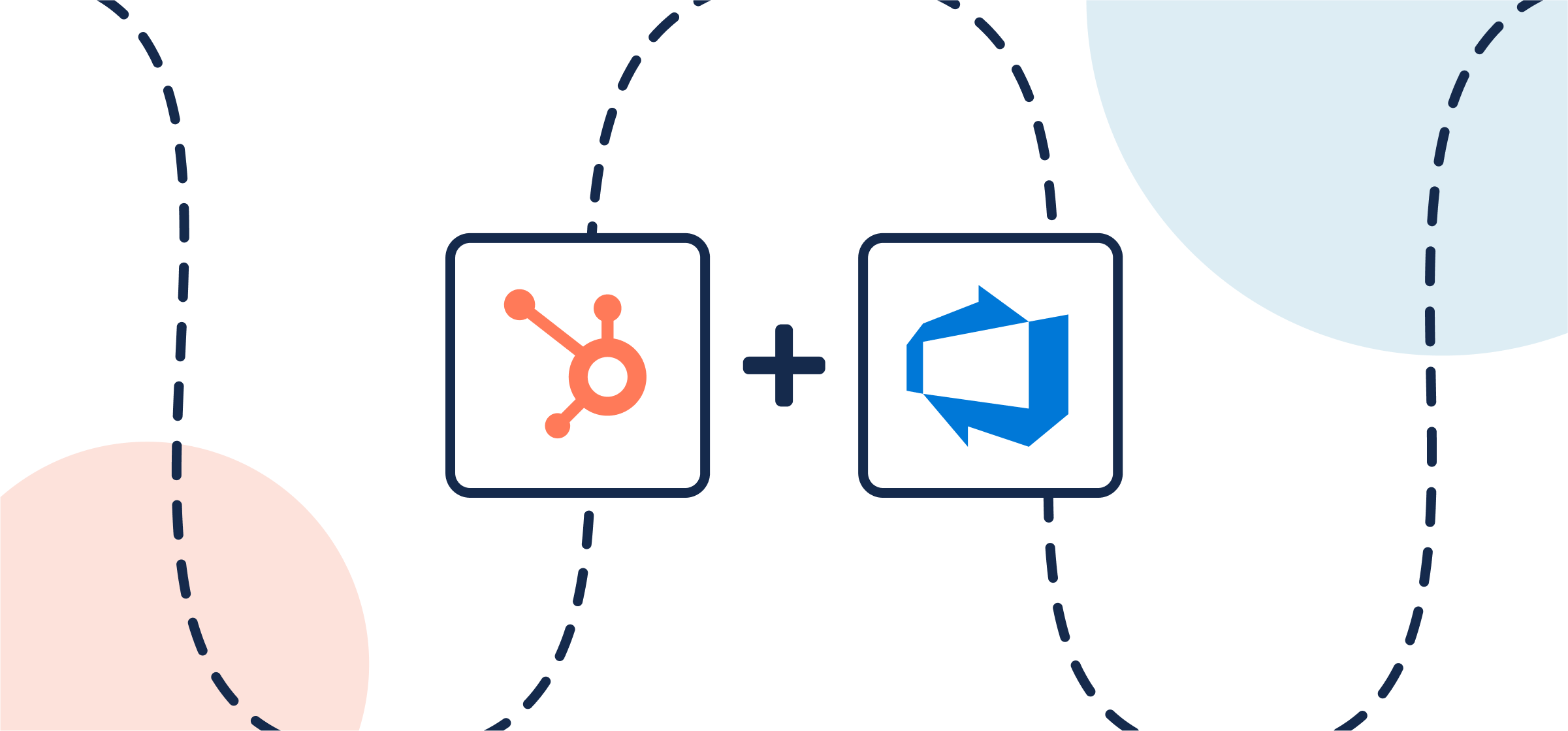How To Build an Azure DevOps-HubSpot Integration With Unito
Here’s everything you need to know about setting up an integration that syncs Azure DevOps and HubSpot work items with an automated 2-way sync through Unito. Since Unito is a no-code, fully customizable platform you can set up your first secure integration without any IT resources. You won’t need to troubleshoot scripts or work with expensive consultants, either.
More of a visual learner? Learn how to set up a Unito flow in this video tutorial.
In this guide:
- Tools: Azure DevOps and HubSpot
- Use cases: Ticket escalation, product management, software development
- Great for: Product managers, IT, customer success, software developers, project management
Why sync Azure DevOps and HubSpot?
Azure DevOps (ADO) is an essential part of many software development workflows. It’s where your developers get their work done, where they plan upcoming sprints, and where they collaborate seamlessly. But, in most organizations, ADO is a major silo. As much as it helps developers collaborate among themselves, it keeps everyone locked out of their essential work.
HubSpot, on the other hand, is the centerpiece of all revenue-generating workflows in your organization. Sales deals move through pipelines in HubSpot, marketers pull customer data from the content they create in HubSpot, and your customer success team might work exclusively in HubSpot. This is a silo of its own, completely blocked off to software developers.
This wouldn’t be an issue if some of your organization’s essential workflows didn’t depend on collaboration between teams in HubSpot and Azure DevOps. Workflows like:
- Streamlining support ticket escalation.
- Monitoring development on dealmaking features.
- Integrating product launches in marketing campaigns.
- Improving the new feature to help center article pipeline.
Now let’s break down how it’s done.

Step 1. Connect Azure DevOps and HubSpot to Unito
- Sign up for Unito if you haven’t already.
- Navigate to the Unito App and click +Create Flow.
- Click Start Here to connect Azure DevOps and HubSpot.
- Click +Choose account for each tool and complete the authorization process.
- Click Confirm.

When you’re ready, click Confirm.
Is this your first time connecting tools to Unito? Check out this guide for more in-depth instructions.
Authorizing ADO to sync with Unito
Before you sync any Azure DevOps work items, Third-party application access via OAuth needs to be turned on.
To do this, go to Organization Settings in ADO and click on Policies. Then, toggle on the Third-party application access via OAuth option. This is essential to connect Azure DevOps to Unito.
Step 2. Choose flow direction for new work items
When you create new Azure DevOps or HubSpot work items, Unito creates synced versions in the other tool automatically. With flow direction, you determine where that happens:
- 2-way, meaning new Azure DevOps and HubSpot items will be created to match work items in either tool.
- 1-way from Azure DevOps to HubSpot, which creates new HubSpot work items to match those you create manually in Azure DevOps. Creating work items manually in HubSpot won’t create new Azure DevOps items.
- 1-way from HubSpot to Azure DevOps, which creates new Azure DevOps work items to match those you create manually in HubSpot. Creating work items manually in Azure DevOps won’t create new HubSpot items.

Step 3. Set rules to sync specific Azure DevOps and HubSpot work items
Rules give you finer control over your Unito flows, allowing you to do two things:
- Filter out work items you don’t want to sync between tools based on specific fields.
- You could, for example, set a rule that only syncs HubSpot deals with a specific owner or Azure DevOps items with a certain tag.
- Automate certain actions so synced work items are always created where and how you need.
- For example, you could have new HubSpot deals automatically land in the New stage of your pipeline or automatically set the state for an Azure DevOps item.
To start creating a rule, click Add a new rule. Then choose what will trigger that rule and what happens when it’s triggered.
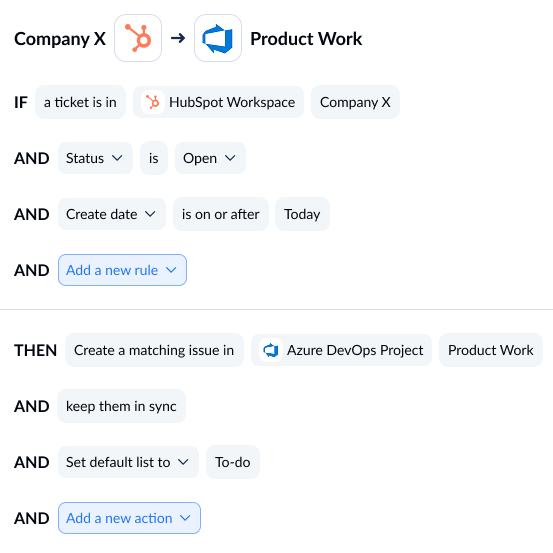
You can learn more about setting rules here.
Step 4. Map fields between Azure DevOps and HubSpot
Field mappings pair fields in Azure DevOps with fields in HubSpot so your data goes exactly where it needs to, whether these fields have the same name (e.g., Assignee to Assignee) or not (e.g., Create Date to Created At). When it’s time to map your fields, you can either let Unito do it for you by clicking Map automatically or click Map manually to customize them yourself. You can customize field mappings later even if Unito maps them automatically.
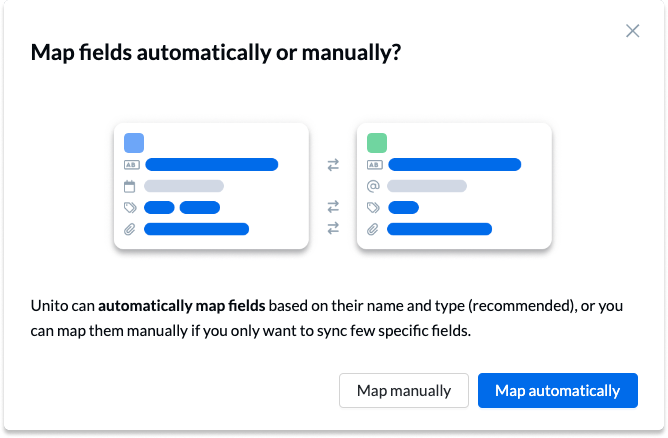
When you’ve mapped your fields, you’ll see something like this.
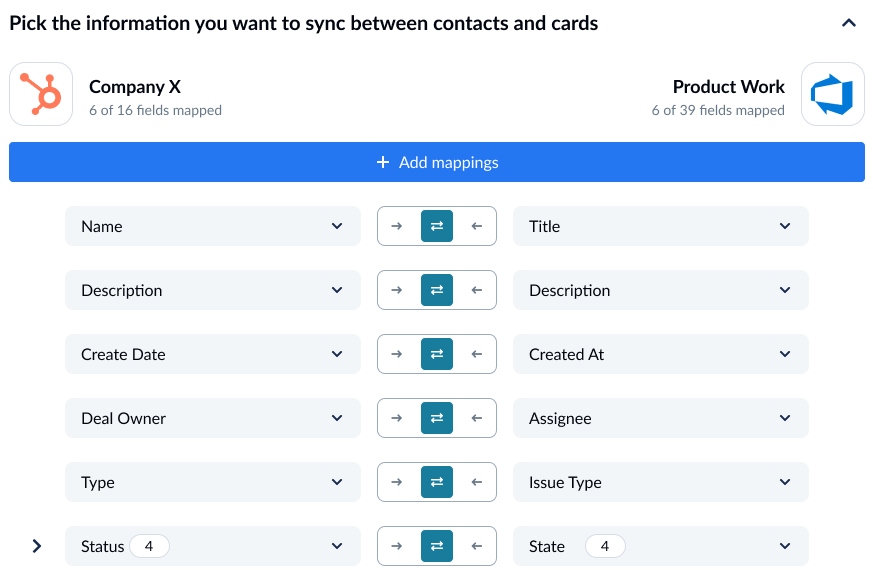
From here, click +Add mapping then Select a field to sync additional fields. Unito automatically recommends compatible fields for any field you add here through a drop-down menu.
Some fields have a cog icon, meaning they can be customized further. For example, a Priority field can be customized to match specific options in another field.
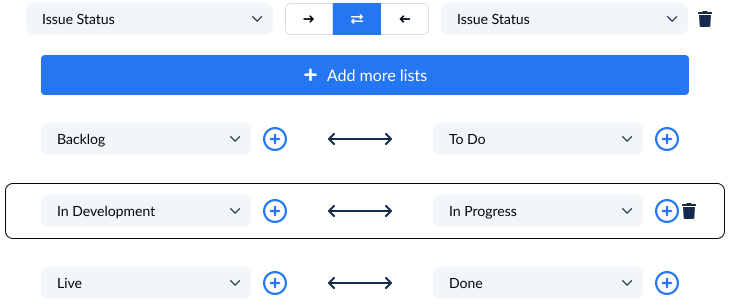
Step 5. Launch your Azure DevOps-HubSpot integration
That’s it! You’re ready to launch your first flow. Once you do, Unito will automatically sync Azure DevOps and HubSpot items, keeping all fields you map up to date automatically.
Ready to optimize your pipeline?
Meet with our team to see what Unito can do for your workflows.
What’s next?
Need to integrate Azure DevOps or HubSpot with other tools in your stack? Check out our other guides below:

